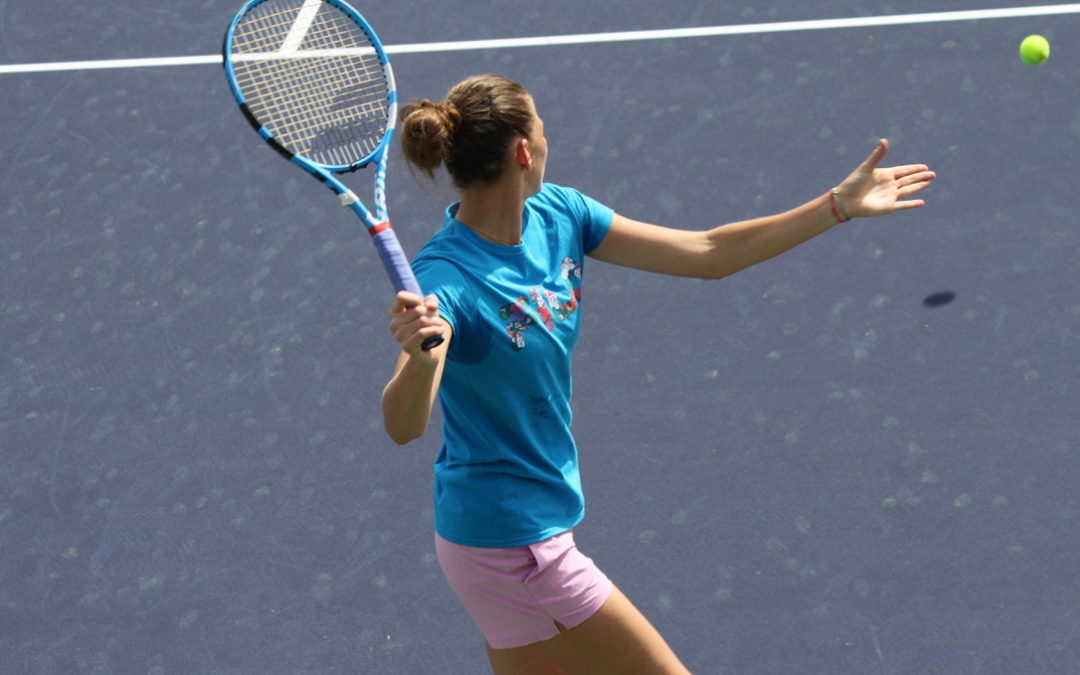The best way to introduce this topic is by sharing with you a story which changed my coaching vision and will probably impact yours. About two years ago in Melbourne I met Emma Doyle, the most energetic coach I have ever seen, and we discussed about what a player really learns from the coach and which lesson he could remember for life. According to her experience, she told me the following story:
“When I was young, my dad used to give me a map while driving to a tournament. My mission was to find a way to reach the tournament venue without taking highways or any other paid roads. Later on, I understood that this experience helped me training my mind to solve problems on-court but also off-court on a daily basis.”

I found this story very impactful and the way Emma shared this memory showed me how this event changed her mindset and the way she approaches problems in her everyday life. Later on, following this conversation, I asked myself:
Well, my goal is to develop better long-term persons, athletes and players by helping them getting better on-court but also off-court. How could I, as a S&C Coach, introduce problem-solving situations into my sessions with the players I work with?
Let’s first explain what problem solving is and why it is important in sport especially in tennis before giving you some tips and practical application on how I challenge my players through different problem-solving situations on a daily basis.
Problem-Solving Skill: the most valuable skill in life.
Problem solving is defined as a process requiring a series of efforts to remove the difficulties to reach a certain point (Bingham, 1998). Solving problems is a complex process involving cognitive, affective and behavioral activities and this is why problem-solving skills are also very broad and extensive. In everyday life, problem solving or coping with stressful events is related with psychological health and well-being but it is also the main quality of world-class managers and successful people who put the problem-solving skill as one of the most valuable skill in life.
In sport, problem solving is related with performance and success. From a tactical perspective, being able to solve different problems when versing my opponent is vital in every sport. Tennis is an individual sport which required a permanent analysis of the opponent and the situation in order to think how and where to play the next shot, the next point and which strategy to adopt in order to win the match.
According to research, it is considered that tennis like many other sports can build up problem solving skills. It has been proven that regular tennis training increases problem solving skills (Vatansever and Ozen, 2017) as well as dance activities (Kuru and Karabulut, 2009) and football (Acar, 2013).
How to integrate Problem-Solving situations in your trainings.
As a coach, my main goal is to help my players getting better. Teach them valuable lessons and optimize the time they spend at training is my priority especially if I’m working with junior players who are involved in Long Term Athlete Development (click hereto see the LTAD plan of Tennis Canada). The best way to develop a more complete player is by using an integrated training methodology which allow the player to develop different game aspects (physical, psychological, technical, tactical…) of the tennis game. Here are different opportunities to enhance your training program with problem-solving situations:
- Warm-up: the first 15 minutes of a training session are important to be ready to play. If physical warm-up with mobility, band activation and movement preparation are regularly used as well as service boxes hitting, how do you prepare the mind for the upcoming session? Adding a problem-solving situation early on could improve focus and develop mental skills of the player but also bring energy and awareness on-court for the rest of the training session.
- Rest time: during a fitness session, if you’re a serious and smart player who train for tennis with explosive movements or heavy loads (have a look at Matt Kuzdub articlefor more information), rest time happen quite often and it is a great opportunity to add valuable exercises into your program. Maximizing rest intervalis often related to injury prevention, core exercises, vision training or just passive rest but it’s definitely a useful time to put your players into problem-solving situations and make their mind work: No brain, No muscles!
- Pre-match routine:warming-up the mind before a match is sometime forgotten but has definitely many benefits. Too many tennis players are just rallying to warm-up and miss a great opportunity to switch-on their mindset. Adding a problem-solving situation as part of the pre-match routine could make the player ready to compete, I mean ready to find a way to win by solving problems on-court.
Practical examples of Problem-Solving situations.
There are many ways to challenge your players with Problem-Solving situations, the only thing you need is a bit of creativity and keep in mind the training principles. It could be individual situations but also team-working situations which could be useful for creating a team-spirit in your training facility:
- Rubik’s Cubes
- Puzzles
- Chess
- Skills (Juggling…)
- Card games
- Escape Game
- Orienteering
- Many more…

I hope this read helped you having a more holistic vision of coaching in tennis. Give it a try with your players, on-court, at the gym or off-court and see what changed in their ability to solve problems!
“In tennis, there’s no coaching, no passing the ball. It’s a problem solving as its purest.”
Andre Agassi
Author: Cédric Brandli MScs Sport Science S&C and Tennis CoachGPTCA & ISMCA Level C

